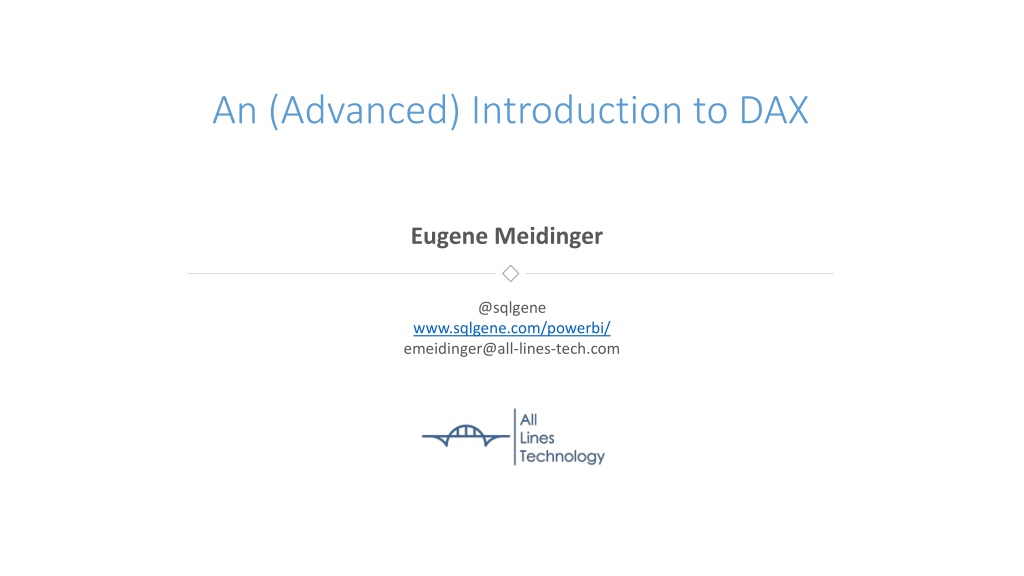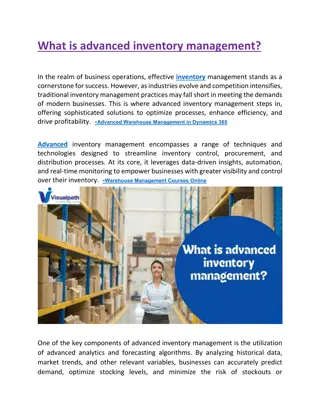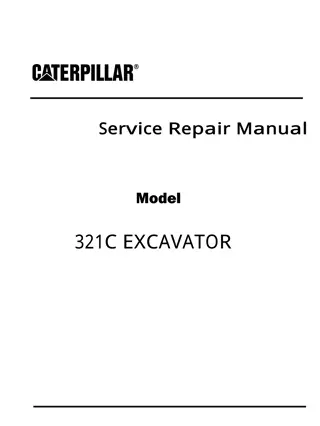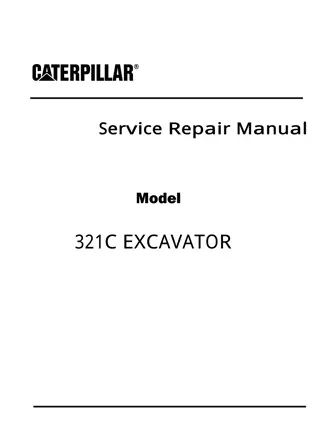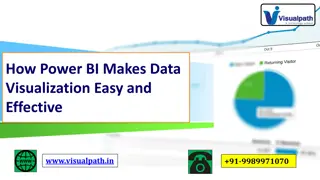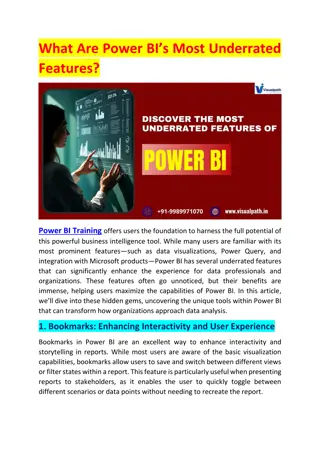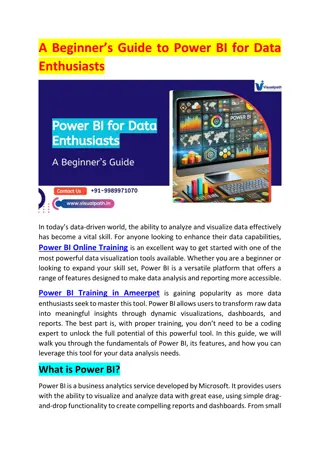An (Advanced) Introduction to DAX
In this insightful session, Eugene Meidinger delves into the fundamental concepts of DAX (Data Analysis Expressions) while outlining the complexities that make it distinct from Excel or SQL. Explore the learning curve, types of business logic, and practical examples to enhance your understanding of DAX. Discover the nuances of calculated columns, measures, filtering, and more, as Eugene guides you through building a solid mental model of DAX.
Download Presentation

Please find below an Image/Link to download the presentation.
The content on the website is provided AS IS for your information and personal use only. It may not be sold, licensed, or shared on other websites without obtaining consent from the author.If you encounter any issues during the download, it is possible that the publisher has removed the file from their server.
You are allowed to download the files provided on this website for personal or commercial use, subject to the condition that they are used lawfully. All files are the property of their respective owners.
The content on the website is provided AS IS for your information and personal use only. It may not be sold, licensed, or shared on other websites without obtaining consent from the author.
E N D
Presentation Transcript
An (Advanced) Introduction to DAX Eugene Meidinger @sqlgene www.sqlgene.com/powerbi/ emeidinger@all-lines-tech.com
About me Business Intelligence developer Worked for All-Lines for 5 years Spoken at Pittsburgh SQL User Group and various SQL Saturdays Help lead the Pittsburgh Power BI User Group Pluralsight Author Went from SQL newb to SQL pro
What is the goal of this talk? Focus on core concepts Building the basic mental model What is difficult to understand?
DAX is NOT X DAX is not Excel DAX is not SQL DAX is not MDX DAX is painful if you don t get this The concepts are harder than the syntax
Learning Curve (The Problem With DAX) Evaluation contexts Nesting evaluation contexts Time Intelligence Difficulty Filtering Scalar functions Measures Calculated columns Functionality
This Courses Focus Evaluation contexts Nesting evaluation contexts Time Intelligence Difficulty Filtering Scalar functions Measures Calculated columns Functionality
Overview Calculated columns vs measures Columnar storage Aggregations Filtering Filter contexts Iterators
There are two types of business logic 1. Calculated columns 2. Measures
Calculated columns Represents a single value per row Computed at time of creation/refresh Results are materialized and stored with the table Attached to a specific table Normally can only see the row they exist in Relates to the idea of row context More on this later Can be used in filters or values/results areas
Example Calculated Column GrossMargin = Sales[Price] Sales[Cost]
Measures Represents a single value per data model Computed at run time Results are dynamic, based on filters This is called the filter context Not attached to any table Sees all the data at once
Example Measure TotalQuantity := SUM(Sales[Quantity])
Implicit measures If you use a calculated column as a value/result it creates an implicit measure
DAX is good at two things 1.Aggregations 2.Filtering
What is an aggregation? Aggregation is combining a group of values into one value Examples SUM AVERAGE MIN MAX DISTINCTCOUNT
Quantity 4 1 3 2 7 5 1 SUM(Quantity) 23
DAX stores data as columns Super efficient for simple aggregations Many aggregate functions take columns as parameters DAX is optimized for single-column operations Columns are the fundamental unit of measure
State PA OH WV PA OH WV OH Color Blue Green Green Red Red Red Red Quantity 1 5 2 3 5 6 2
Color Blue Green Green Red Red Red Red Quantity 4 1 3 2 7 5 1 State PA OH WV PA OH WV OH
Basic units of measure 1. Column 2. Table A set of columns with the same length and sort order 3. Scalar Value 4. Row A table filtered down to a single row Also called a row context
Compression and encoding Value Encoding Dictionary Encoding Run-length encoding Sorting
Color Blue Green Green Red Red Red Red Color Blue,1 Green,2 Red, 4
DAX is good at two things 1.Aggregations 2.Filtering
Two types of Filtering Implicit filtering Explicit filtering
Implicit Filtering Slicers Cell Location
Explicit Filtering GreenQuantity := CALCULATE(SUM(Sales[Quantity]), Sales[Color]="Green") Explicit filtering supersedes implicit filtering
Filtering Context A combination of all the user filters Basic filters are associated with specific, individual columns CALCULATE allows you to overwrite the filter context
Removing Filtering The ALL() function removes filters Can be used on a whole table, or specific columns AllColors:=CALCULATE(SUM(Sales[Quantity]), ALL(Sales[Color]))
Applying complex filtering This causes an error: CALCULATE(SUM(Sales[Quantity]), Sales[Price] - Sales[Cost] <= 1) Need to use something called an iterator FILTER() takes in a table and an expression Returns a filtered table
Example FILTER() LowMargin:=CALCULATE(SUM(Sales[Quantity]),FILTER(Sales, Sales[Price] - Sales[Cost] <= 1))
Iterators Process tables row by agonizing row Expensive to process Rows are filtered one at a time. Called a row context Often a filter context AND a row context is applied Necessary to refer to multiple fields in the same row SUM(Sales[Price] - Sales[Cost]) raises an error
Example Iterator AverageGrossMargin1:=AVERAGE(Sales[GrossMargin]) AverageGrossMargin2:=AVERAGEX(Sales, Sales[Price] - Sales[Cost]) Requires a table parameter to iterate through Iterators are expensive
Key concepts 1. Calculated columns are materialized values in a table 2. Measures look at all the data plus the filter context 3. Explicit filtering overrides implicit filtering 4. DAX is optimized for single-column operations 5. Rows don t exist, but row contexts do 6. Multi-column operations require iterators, which are expensive 7. CALCULATE() + FILTER() / ALL() can be used to apply advanced filtering
Questions? Contact Info @sqlgene www.sqlgene.com/powerbi/ emeidinger@all-lines-tech.com
